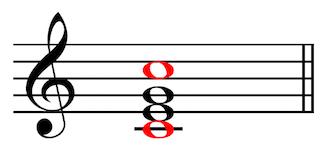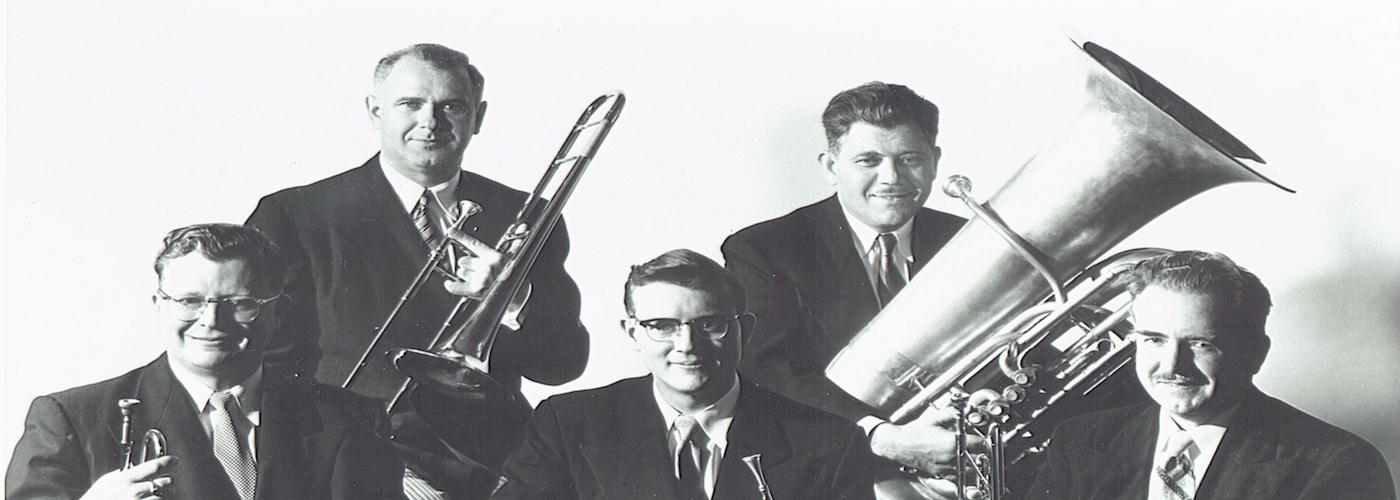Corporate cheerleading tends to rankle engineers. The same critical reasoning that produces good code turns cynical when confronted with tortured business-ese attempts to motivate. So, it can be hard to get across the importance of organizational alignment.
Yet aligning every product choice to a master theme—from strategy down through lines of code—simplifies and focuses decision-making, prevents waste, and results in a more consistent, useful product.
The mecahnics of music have an object lesson to teach in alignment.
Precision and resonance
A well-played major triad is perhaps the profoundest beauty in music*.
 Think of a triad as the do-mi-sol from do-re-mi-sol-fa-la-ti-do. These chords tend to be the big closer in showy symphonic works. They put the finality on a phrase of jazz or pop. They're the repose after the turmoil of dissonance. They're pretty when quiet, and thrilling when loud.
Think of a triad as the do-mi-sol from do-re-mi-sol-fa-la-ti-do. These chords tend to be the big closer in showy symphonic works. They put the finality on a phrase of jazz or pop. They're the repose after the turmoil of dissonance. They're pretty when quiet, and thrilling when loud.
That's a simplistic generalization, but then so is this quote from the great composer and theorist Paul Hindemith:
"Music, as long as it exists, will always take its departure from the major triad and return to it. The musician cannot escape it any more than the painter his primary colors or the architect his three dimensions."
(And that's coming from a guy whose harmony was adventurous by many standards.)
But here's the dirty secret: most major triads are played out of tune. For example, pianos compromise them. When keyboards first became popular, they could only be perfectly tuned in one key. Pianos varied so much that music which sounded terrific in Leipzig would be noise in Prague—or even down the street.
Into this chaos came a great innovation called "equal temperament", which let composers write in any key—because every key was equally out of tune.
Our ears prefer integer ratios, and a natural major triad has ratios of 4:5:6. This "just intonation" feels the best because it creates the most powerful resonance. Equal-tempered triads have a jangly imperfection. Piano tuners work hard to introduce "beats" in certain intervals, detuning them slightly so that no chord is perfect but every key is equal.
(This is starting to sound like a good allegory for the tradeoffs of product development.)
To fix the harmony, you lower (mi) by an exact amount: 14 cents. That's 14 one-hundredths of the distance from ti back to do. Seems tiny, but so is the difference between a turnover on the 1 yard line and making a touchdown. Nailing that 14-cent adjustment brings the sound waves into perfect alignment; without it, parts of the waveform cancel out in a way that literally turns the volume down. The difference in resonance is akin to what a guitar would sound like if you cut off half of the back.
Now back to business
You've already guessed that I'm going to liken organizational alignment to the resonance created by a major chord played in just intonation. Teams whose decisions harmonize with a well-defined mission make better products than misaligned teams. Product teams make hundreds of little decisions every day: information architecture, workflow, button placement, label wording, when to start building for scale. Every one of them is a chance to go out of tune.
It's not just the builders who benefit from a mission-oriented mindset, of course. Accurately defining the problem a product will solve informs everything from development through marketing to sales. Even the way the finance team writes invoices should align to the mission.
Precise language is the foundation
Like the faithful trombonist who lets the slide out another 5 millimeters to cross the 14-cent gap, a product manager creates alignment though precision. It starts with knowing the needs of the user (which itself involves parsing language). Specific and well-considered words are essential to articulating its solution. It's more than the features and designs and stuff captured in tickets. Product discovery may start at the bottom and go up, or the other way around, but the high-level answer to "why are we building this" must be carefully crafted and explained to every stakeholder.
Precision in language means knowing the difference between data and insights, between knowledge and understanding. It means knowing the exact definition of "conversion" in your user's mind. It means understanding the difference between nimble execution vs. being flighty. And it means being able to explain that people don't need drills, they need holes.
Documents
This is not a comprehensive list, and some initiatives may not benefit from all these pieces, but consider these artifacts as part of your alignment corpus:
- Concise problem statement: what is causing the user pain? (3–5 bullet points should do as a summary. Also, try writing it as a longer narrative in the voice of the user. Even if you don't socialize that, it'll help clarify the pain points in your mind.)
- User personas and buyer personas (they're not the same).
- A brief but expressive market-facing mission statement for the product or feature set. (Think of this as the product's unique value proposition. This is where precision language can help the most, because it expresses the value you're creating in words prospective users will latch onto. The statement doesn't necessarily have to stand on its own without explanation—on the contrary, you want to select words that stimulate curiosity. But once clarified, it should be memorable and make complete sense in the target user's vernacular.)
- A succinct solution statement. (Again, 3–5 bullets.)
- Business alignment: how does the solution fit in with the elevator pitch that executives use to describe your company or business unit?
- KPIs: how will it get measured? (For instance, are you optimizing for user growth? ARPU? Something else?)
Notice that I didn't include details like user stories in this list. They're tactical rather than strategic. Again, while you may build your understanding of the product from the details up (or in both directions simultaneously), once the picture starts to form, every choice should derive from the briefest complete statement of the mission.
It's worth the effort
If you do strategic alignment well, everyone who touches the product (including buyers) will use your precision language as a filter informing every choice they make. The product and its messaging will be more consistent and successful.
In my experience, most everyone welcomes knowing how their day-to-day fits in with the big picture—the why behind the what. Since you're the CEO of the product, invest time in crafting the its top-down messaging, align that with the broader business mission, and evangelize it. Everyone will benefit from the harmonization.
